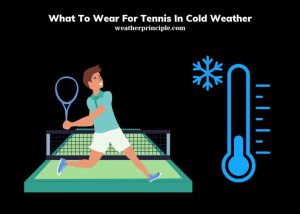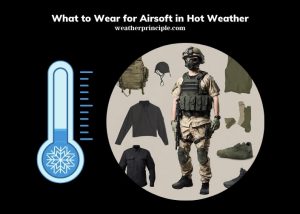Published on: May 11, 2023
Written by Shaown Khan / Fact-checked by Kader Khan
Weather has the power to shape our daily lives and significantly impact entire communities. From heavy rains and thunderstorms to extreme heat and raging wildfires, weather events can present serious challenges for people everywhere. To mitigate these risks and protect ourselves, it’s crucial to understand the importance of weather safety and preparedness. This comprehensive guide will provide you with the essential knowledge and tips needed to stay safe during various weather emergencies.
Weather Hazards
Types of Weather Hazards
Weather hazards can take many forms, each presenting unique challenges and risks. Some common weather hazards include:
- Thunderstorms
- Floods
- Hurricanes
- Tornadoes
- Winter storms
- Extreme heat
- Droughts
- Wildfires
Being familiar with these hazards and their potential impacts is the first step in preparing for weather emergencies.
Weather Forecasting and Alerts
Weather forecasting allows us to predict and prepare for weather hazards. Meteorologists use advanced technology and data analysis to make informed predictions about weather patterns. Staying informed about weather forecasts is crucial for safety and preparedness.
There are various types of weather alerts and warnings, including watches, warnings, and advisories. These alerts are designed to inform the public of impending hazards and allow for ample preparation time. To stay up-to-date on the latest weather information, tune in to reliable sources such as the National Weather Service, local news stations, and trusted weather apps.
Preparing for Weather Emergencies
Creating a Weather Emergency Plan
Developing a weather emergency plan involves identifying risks, designing an evacuation plan, creating a communication plan for family members, and having emergency contacts at the ready. Ensure that each family member is familiar with the plan and knows what to do in various weather emergencies.
Assembling an Emergency Kit
A well-stocked emergency kit is vital for weather preparedness. Essential items include:
- Water and non-perishable food
- First aid supplies
- Flashlights and extra batteries
- A battery-powered or hand-crank radio
- Personal hygiene items
- Copies of important documents
Don’t forget to consider special needs, such as medications or pet supplies. Regularly check and update your kit to ensure that items are in good condition and have not expired.
Securing Your Home
Protect your home from weather hazards by reinforcing its structure, investing in backup power options, implementing flood protection measures, and taking wildfire prevention steps. Regular maintenance and inspections can help identify and address potential vulnerabilities.
Weather-Specific Safety Tips
Thunderstorms and Lightning
During thunderstorms, stay indoors and away from windows. Avoid using electronic devices and plumbing fixtures, as they can conduct electricity. If caught outdoors, find shelter in a sturdy building or vehicle. Do not take cover under trees or other tall objects.

Flood Safety
In the event of a flood, follow your evacuation plan and avoid driving through floodwaters. Once the floodwaters recede, exercise caution when returning to your home, as there may be structural damage and potential hazards.
Hurricane Preparedness
Prepare for hurricane season by reinforcing your home, having an evacuation plan, and assembling an emergency kit. Monitor weather alerts and evacuate or shelter in place as directed. After the storm, be prepared for a potentially lengthy recovery process.
Tornado Safety
Recognize tornado warning signs, such as a dark greenish sky, large hail, or a loud roar. Seek shelter in a basement, storm cellar, or an interior room on the lowest level of your home. Cover yourself with a heavy object or mattress to protect against flying debris.
Winter Storms and Extreme Cold
Prepare for winter storms by insulating your home, winterizing your vehicle, and dressing in warm, layered clothing. Stay indoors during severe winter weather and avoid unnecessary travel. If you must venture outside, cover as much exposed skin as possible and watch for signs of hypothermia and frostbite.
Extreme Heat and Drought
During periods of extreme heat, stay cool by remaining indoors, using air conditioning, and staying hydrated. Limit outdoor activities during the hottest parts of the day and wear loose, light-colored clothing. Recognize the signs of heat-related illnesses, such as heat exhaustion and heatstroke, and seek medical attention if necessary. Conserve water during droughts by following local guidelines and implementing water-saving measures at home.
Wildfire Safety
Create a defensible space around your home by clearing flammable vegetation and debris. Develop an evacuation plan and assemble an emergency kit that includes essential items and important documents. Stay informed about wildfire activity in your area and be prepared to evacuate if needed. During wildfires, be mindful of air quality and take appropriate precautions to protect your health.
Summary
Weather safety and preparedness are essential for protecting ourselves and our communities during various weather emergencies. By staying informed, preparing ahead of time, and following weather-specific safety tips, we can mitigate risks and ensure the safety of our loved ones. Remember to stay vigilant and proactive in your efforts to stay safe in any weather.
Frequently Asked Questions (FAQs)
What are the most common weather-related emergencies?
Some of the most common weather-related emergencies include thunderstorms, floods, hurricanes, tornadoes, winter storms, extreme heat, droughts, and wildfires.
How can I stay informed about weather emergencies in my area?
Stay informed by monitoring the National Weather Service, local news stations, and trusted weather apps for up-to-date information on weather forecasts and alerts.
How often should I update my emergency kit and plan?
It’s a good idea to review and update your emergency kit and plan at least once a year or whenever significant changes occur in your family or living situation.
What should I do if I’m caught outside during a severe weather event?
Seek shelter immediately in a sturdy building or vehicle. If that’s not possible, follow weather-specific safety tips to protect yourself and minimize risks.



